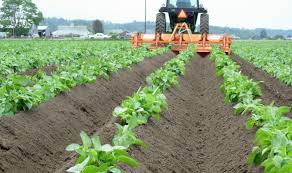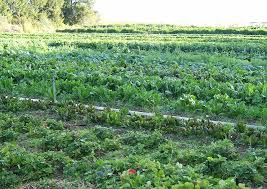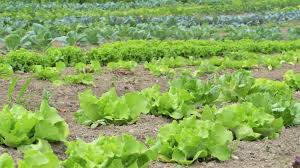The International Federation of Organic Agriculture Movements (IFOAM) describes organic agriculture as a production system that sustains the health of soils, ecosystems, and people.
It relies on ecological processes, biodiversity, and cycles adapted to local conditions rather than the use of inputs with adverse effects.
The organization further explains that organic agriculture combines tradition, innovation, and science to benefit the shared environment, promote fair relationships, and ensure a good quality of life for all involved.
Based on this, organic agriculture can be defined as a farming system involving cultivation of land and raising crops to maintain soil health by using organic wastes (crop, animal, farm, and aquatic wastes).
Other biological materials along with beneficial microbes (biofertilizers) to release nutrients to crops for sustainable production in an eco-friendly, pollution-free environment.
Growing crops under organic farming management requires an integrated approach where all aspects of the farming system are interlinked and work together.
Healthy biologically active soil provides crop nutrition, on-farm biodiversity controls pests, crop rotation and multiple cropping maintain system health, and integration of cattle supports productivity and sustainability.
Organic management emphasizes optimization of resource use and productivity rather than maximization and overexploitation of resources at the expense of future generations.
Read Also: Options for Genetic Improvement in Tropical Livestock
Management Principles for Sustainable Organic Farming

1. Introduction to Soil Health and Organic Farming Systems
A living soil is the foundation of organic farming. Healthy, active soil combined with proper cropping patterns, crop residue management, and effective crop rotation sustains optimum productivity over years without loss of fertility.
Organic farming embraces a comprehensive management approach to improve soil health, regional ecosystems, and produce quality.This approach includes all agricultural systems promoting environmentally sound production of food and fibers.
Such systems prioritize local soil fertility as key to success by respecting the natural capacities of plants, animals, and landscapes.
The goal is to optimize quality in agriculture and environment. Living soil is maintained through continuous incorporation of crop and weed biomass, animal dung, urine-based manures (FYM, NADEP, vermicompost), biofertilizers, bioenhancers, and special liquid formulations like vermiwash and compost tea during crop growth.
A general practice is returning crop residues to the field, either directly or indirectly. Cattle droppings may also be composted and applied to fields. Biomass removed for food, fiber, cattle feed, or firewood should be compensated by other bio-waste on the farm to maintain a nutrient balance for each crop.
In phosphorus-deficient and acidic soils, mineral-grade rock phosphate and lime may be added directly or through compost enrichment with biofertilizers and microbial inoculants.
2. Key Steps in Organic Crop Management for Effective Farming
Transitioning to organic farming requires understanding the system’s basic needs and addressing long-term strategies.
Poor soil health caused by organic matter loss and reduced soil microbial load is a common problem in many agricultural areas. Declining water availability and increasing temperatures worsen the situation.
Heavy reliance on market inputs and energy has made agriculture costly and high-input, with diminishing returns. A productive, low-cost, resource-conserving, and sustainable system is essential. The following steps guide effective organic crop management:
1. Soil Enrichment: Stop chemical use, apply crop residue as mulch, use organic and biological fertilizers, practice crop rotation and multiple cropping, avoid excessive tillage, and maintain green cover or biological mulch.
2. Temperature Management: Keep soil covered and plant trees and bushes on bunds for shade and temperature regulation.
3. Soil and Rainwater Conservation: Construct percolation tanks, contour bunds on slopes, contour row cultivation, farm ponds, and maintain low-height plantations on bunds.
4. Harvesting Sun Energy: Maintain green cover year-round by combining various crops and planting schedules.
5. Self-Reliance in Inputs: Produce own seeds, compost, vermicompost, vermiwash, liquid manures, and botanical extracts on the farm.
6. Maintenance of Life Forms: Create habitats for beneficial organisms, avoid pesticides, and promote biodiversity.
7. Integration of Animals: Utilize animals as integral components to provide manure and other products.
8. Use of Renewable Energy: Employ solar energy, biogas, bullock-driven pumps, and other sustainable machinery.
Multiple Cropping as a Core Practice in Organic Farming

Mix cropping is a distinctive feature of organic farming where various crops are grown simultaneously or at different times on the same land. Each season should include at least 40% legume crops.
Mixed cropping enhances photosynthesis and reduces nutrient competition, as different plants extract nutrients from different soil depths. Legumes fix atmospheric nitrogen, benefiting companion and subsequent crops.
Deep-rooted plants bring nutrients from lower soil layers to the surface through leaf fall, aiding nutrient recycling and protecting soil from erosion.
Crop combinations should be selected according to season and needs, considering compatibility among plants (e.g., maize pairs well with beans and cucumber; tomatoes with onions and marigold).
Farms should maintain 8-10 crop types at all times, with each plot having 2-4 crops, including at least one legume. When a plot contains only one crop, adjacent plots should have different crops.
For diversity and pest control, planting 50-150 vegetable seedlings per acre for home consumption and 100 marigold plants per acre in all fields is recommended. High nutrient-demanding crops like sugarcane can be grown with legumes and vegetables in suitable combinations to ensure optimum productivity.
Crop Rotation: The Backbone of Organic Farming
Crop rotation maintains soil health and supports natural microbial activity. It involves growing different crops sequentially on the same land, ideally following a 3-4 year rotation plan.
High nutrient-demanding crops should precede and follow legume-dominated combinations. Rotating pest host and non-host crops controls soil-borne diseases, pests, and weeds.
Rotation improves productivity, soil fertility, and soil structure through diverse root systems. Frequent inclusion of legumes and green manure crops in rotation enhances soil nitrogen. Benefits of crop rotation include:
1. Different nutrient needs of plants reduce soil depletion
2. Improved soil structure through diverse roots
3. Avoidance of pest build-up
4. Weed control through varied cropping
Examples of successful crop rotations under the Network Project on Organic Farming (NPOF of ICAR) include:
- Soybean – Berseem/Mustard/Chickpea at Raipur, Chhattisgarh
- Tomato/Cabbage – Cauliflower – Pea and Maize – Garlic at Bajaura, Himachal Pradesh
- Rice – Wheat/Potato/Mustard/Lentil at Ranchi, Jharkhand
Read Also: All You Need To Know About Animal Shelters
Manuring and Soil Enrichment with Organic Inputs

During conversion to organic farming, soil fertility improves and is maintained primarily by organic inputs like well-decomposed organic manure, vermicompost, green manure, and biofertilizers.
These inputs nourish the soil, enabling rich microflora and microfauna to support crop nutrient requirements. Key on-farm sources include plant biomass, FYM, cattle dung manure, enriched composts, biodynamic compost, and vermicompost.
Off-farm sources include non-edible oil cakes, poultry manure, biofertilizers, mineral-grade rock phosphate, and lime.
Biomass from glyricidia and other plants grown on bunds, on-farm produced compost and vermicompost, animal dung and urine, and crop residue form the primary nutrient base.
Concentrated manures like crushed oil cakes, poultry manure, and vegetable market waste compost can be used in moderation.
Excessive manure use should be avoided. Crop rotation and multiple cropping improve resource utilization. The quantity of external inputs depends on crop type and nutrient requirements.
Applying liquid manure 3-4 times during crop growth maintains soil microorganism activity. Vermiwash, compost tea, cow urine, Pachgavya, and Biosol act as growth promoters when used as foliar sprays, with 3-5 applications after 25-30 days of sowing enhancing productivity.
Biodynamic preparations like BD-500 and BD-501 foliar sprays also support growth promotion.
Use of Biofertilizers and Microbial Cultures in Fertility Management
Biofertilizers such as Rhizobium, Azotobacter, Azospirillum, PSB, and Pseudomonas effectively manage soil fertility and biological nutrient mobilization.
Recently developed consortia adapted to local conditions improve efficiency, especially in chemical-free farming. Consistent use of these biofertilizers is crucial across cropping systems to maximize benefits.
Pest Management Practices in Organic Farming
Synthetic chemicals are prohibited in organic farming; therefore, pest management relies on:
1. Cultural or agronomic methods
2. Mechanical control
3. Biological control
4. Organically acceptable botanical extracts and safe chemicals like copper sulphate and soft soap
1. Cultural methods include using disease-free seeds and resistant varieties, maintaining biodiversity, crop rotation, multiple cropping, habitat manipulation, and trap crops to keep pests below economic thresholds.
2. Mechanical methods involve removal and destruction of affected plants and eggs, installation of bird perches, light traps, sticky colored plates, and pheromone traps.
3. Biological control employs pest predators and pathogens like Trichogramma sp., Chelonus blackburni, Apanteles sp., and Chrysoperla sp. at recommended release rates to control pest populations effectively.
Use of Biopesticides in Organic Crop Protection
Biopesticides such as formulations of Trichoderma viride, T. harzianum, or Pseudomonas fluorescence manage seed-borne and soil-borne diseases effectively.
Other available formulations include Beauveria bassiana, Metarhizium anisopliae, Numeria rileyi, Verticillium sp., targeting specific pests. Bacillus thuringiensis (Bt) strains control coleopteran pests and others, for example, managing diamondback moth in crucifers and vegetables at 0.5-1.0 kg/ha.
Do you have any questions, suggestions, or contributions? If so, please feel free to use the comment box below to share your thoughts. We also encourage you to kindly share this information with others who might benefit from it. Since we can’t reach everyone at once, we truly appreciate your help in spreading the word. Thank you so much for your support and for sharing!
